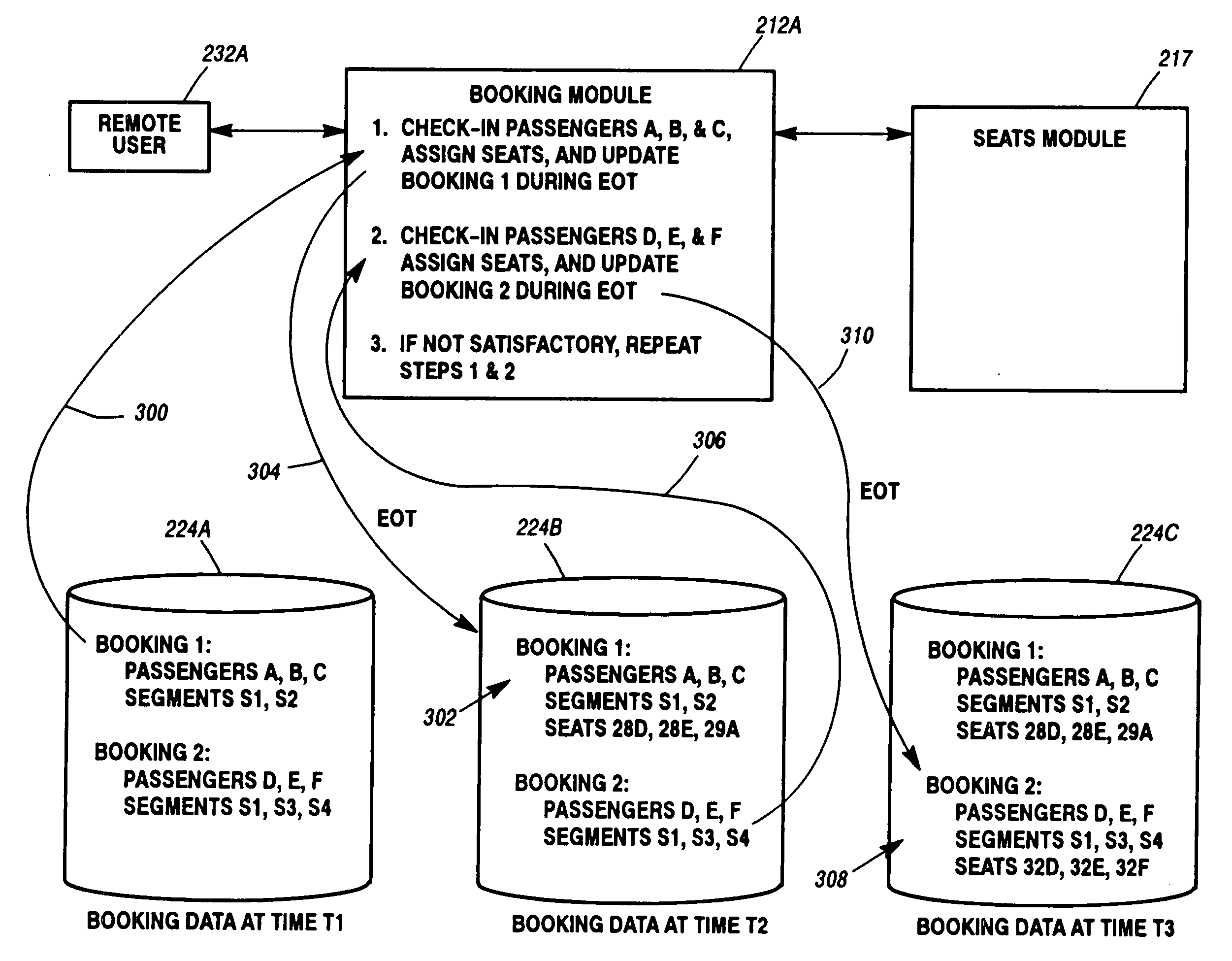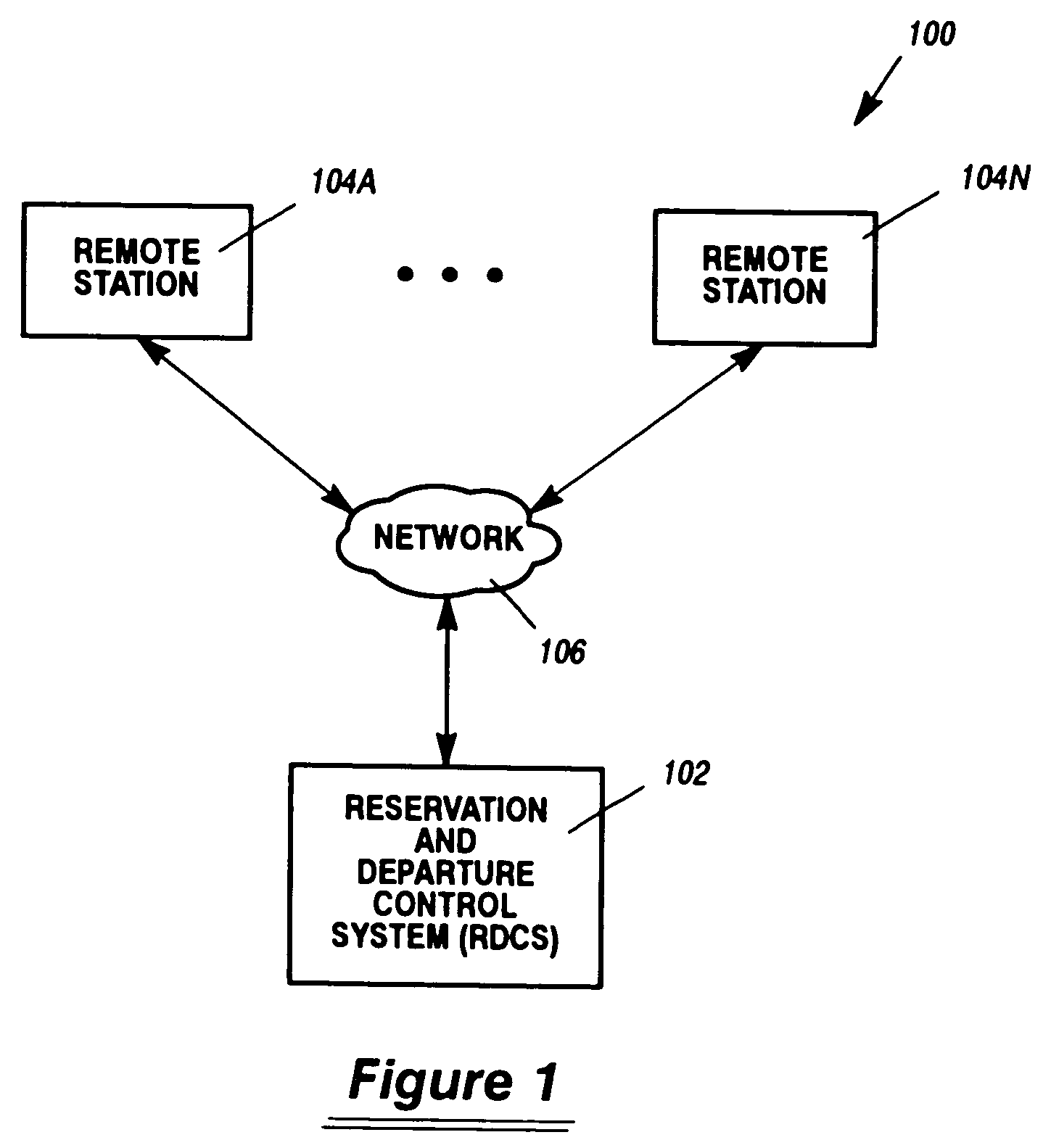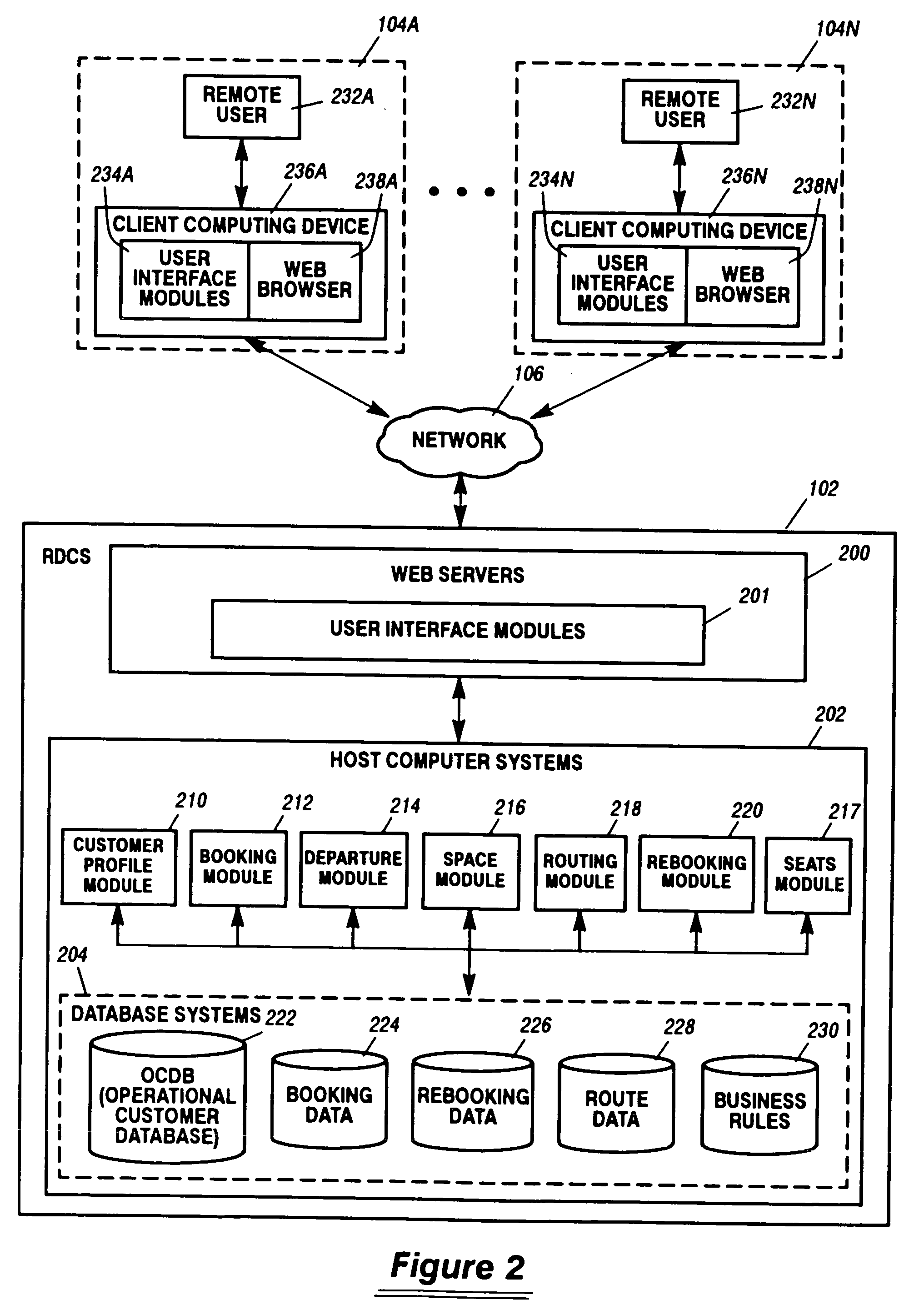System and method for processing multiple bookings to receive a transportation service
a transportation service and system technology, applied in the field of transportation system and method for processing multiple bookings, can solve the problems of not being able to rebook and/or reseat customers, not being able to provide seats intended, and not being able to meet the needs of customers, so as to save human and system resources
- Summary
- Abstract
- Description
- Claims
- Application Information
AI Technical Summary
Benefits of technology
Problems solved by technology
Method used
Image
Examples
Embodiment Construction
[0062]As discussed above, the system of FIGS. 1 and 2 provides booking, check-in, and re-booking services for a transportation carrier such as an airline. These services can be performed in a serial manner. Alternatively, the services can be provided in a more optimal parallel manner according to the current invention, as will be discussed in relation to the remaining Figures.
[0063]A. Booking Operations
[0064]FIG. 3 is a block diagram that illustrates the manner in which multiple bookings may be processed in a serial manner via booking module 212A, which is adapted to perform this type of serial operation.
[0065]In this example, booking module 212A has already created a first booking, booking 1, for passengers A, B, and C who are traveling together on flight segments S1 and S2. For instance, segment S1 may be a flight from Minneapolis to Chicago, and flight S2 may be a flight from Chicago to Washington D.C. Information about booking 1 was created when the seats were sold to passengers...
PUM
 Login to View More
Login to View More Abstract
Description
Claims
Application Information
 Login to View More
Login to View More - R&D
- Intellectual Property
- Life Sciences
- Materials
- Tech Scout
- Unparalleled Data Quality
- Higher Quality Content
- 60% Fewer Hallucinations
Browse by: Latest US Patents, China's latest patents, Technical Efficacy Thesaurus, Application Domain, Technology Topic, Popular Technical Reports.
© 2025 PatSnap. All rights reserved.Legal|Privacy policy|Modern Slavery Act Transparency Statement|Sitemap|About US| Contact US: help@patsnap.com



